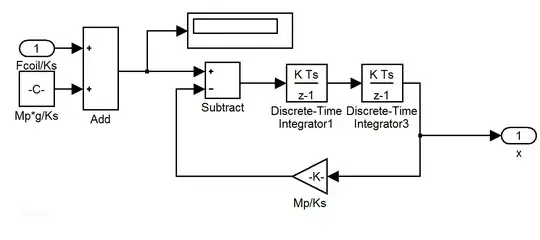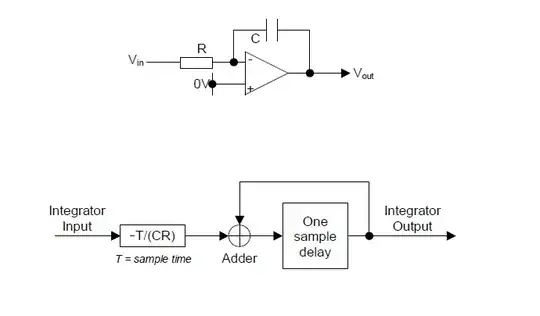I am trying to Model control for a Micro-controller which (under Real Time Development) does not support Continuous time solver. So, instead i have to use Discrete Time Solver. How do i replace SECOND ORDER INTEGRATOR with DISCRETE TIME INTEGRATOR? The equation i am modelling is a Second Order Differential Equation.
Equation: m.y" = F_coil - Ks.x -mg
where
y" = d^2(x)/dt
F_coil = ((ni)^2)/(2.g^2)
{ where n=number of turns
i=current
g=air gap
Ks = Spring Pre-load
x = distance travelled by the solenoid plunger }
m = mass of the plunger
g = gravitational constant
Intentionally this is easy using a second order integrator.But when i use the discrete time integrator the output is completely different. Continuous time Integrator Output: 0.067 Discrete Time Integrator Output: 3207
HOW DO I ACHIEVE THE SAME WITH DISCRETE TIME INTEGRATOR?
I am grateful for any input and please tell me if you need anymore info!!
EDIT:PLEASE CHECK THE IMAGE(it corresponds to the given equation):

